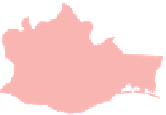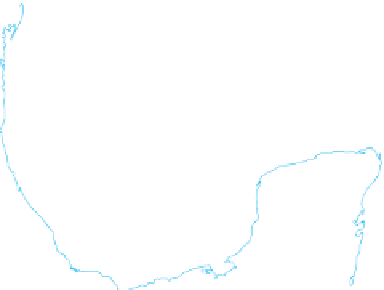Geography Reference
In-Depth Information
for parts of the global economic periphery. Coca, the
source plant of cocaine, is grown widely in Colombia,
Peru, and Bolivia. Over half of the world's cultivation of
coca occurs in Colombia alone.
Heroin and opium are derived from opium poppy
plants, grown predominantly in Southeast and South Asia,
especially in Afghanistan and Myanmar. In the 2008
World Drug Report, the United Nations reported that 92
percent of the world's opium production took place in
Afghanistan. The United States-led overthrow of the
Taliban in Afghanistan in 2001 created a power vacuum in
the country and an opportunity for illegal drug produc-
tion to quickly rebound (the austere Taliban government
had virtually eradicated opium production in Afghanistan
by 2001). Most opium production in Afghanistan today
occurs in fi ve unstable southern provinces.
United States government policies have affected
production of illegal drugs in Latin America. During the
1980s and 1990s, the U.S. government worked with local
authorities to crack down on coca production in
Colombia. With this crackdown, much of the drug pro-
duction and traffi cking moved north to northern Mexico.
In June 2005, the
Economist
quoted one American offi cial
as reporting that “Mexican criminal gangs 'exert more
infl uence over drug traffi cking in the U.S. than any other
group.' Mexicans now control 11 of the 13 largest drug
markets in the United States.” Marijuana and opium pro-
duction in Mexico is on the rise, and the United States
Drug Enforcement Agency (DEA) is concerned about the
high potency of marijuana coming out of Mexico and
Canada. Although more than 90 percent of the world's
opium production is in Afghanistan, most heroin (which is
derived from opium) coming into the United States comes
from Mexico or Colombia. The heroin consumed in the
western United States comes from opium grown in
Mexico, whereas the heroin consumed in eastern United
States comes from opium grown in Colombia.
Drug cartels that oversee the drug trade have
brought crime and violence to the places where they
hold sway (Fig. 11.19). There are areas in Rio de Janeiro
115
°
110
°
105
°
100
°
95
°
90
°
100
°
MEXICAN DRUG CARTEL
REGIONS OF INFLUENCE
UNITED STATES
Federation Zones
The “Federation” is a term widely used to descibe
alliances formed between several major organizations.
These regions of control are fluid and are not as
clearly defined as shown.
0
100
200
300
400
500
600 Kilometers
0
100
200
300
400 Miles
Coahuila
GULF CARTEL
FEDERATION
Nuevo
León
G
ulf
of M
exi
co
Tamaulipas
San Luis
Potosí
6
Yu
catán
7
1
2
3
C
ampec
he
1
Querétaro
5
Mexico
9
Michoacán
8
2
Hidalgo
4
Puebla
3
Mexico
Tabasc
o
4
Morelos
FED
ERATI
ON
Be
lmopa
n
Guerrero
5
Tlaxcala
B
ELIZE
Oaxaca
6
Aguascalientes
Chiap
as
7
Guanajuato
8
Mexico City
(Distrito Federal)
9
G
UAT
EMAL
A
H
ONDU
RAS
Teg
ucigalp
a
Colima
Guate
mala
San Sa
lvador
90
115
°
110
°
105
°
100
°
95
°
°
Longitude West of Greenwich
Figure 11.19
Mexican Drug Cartel Regions of Infl uence in Mexico.
Courtesy of
: Food and Agriculture
Service. http://www.fas.org/sgp/crs/row/RL34215.pdf






































































































































































































